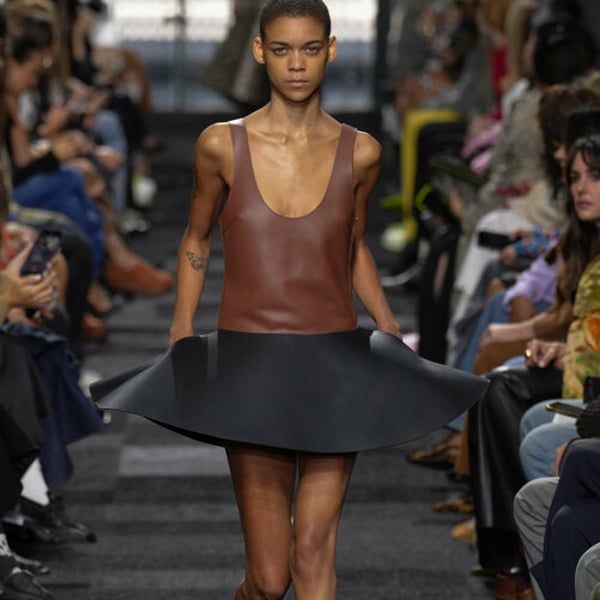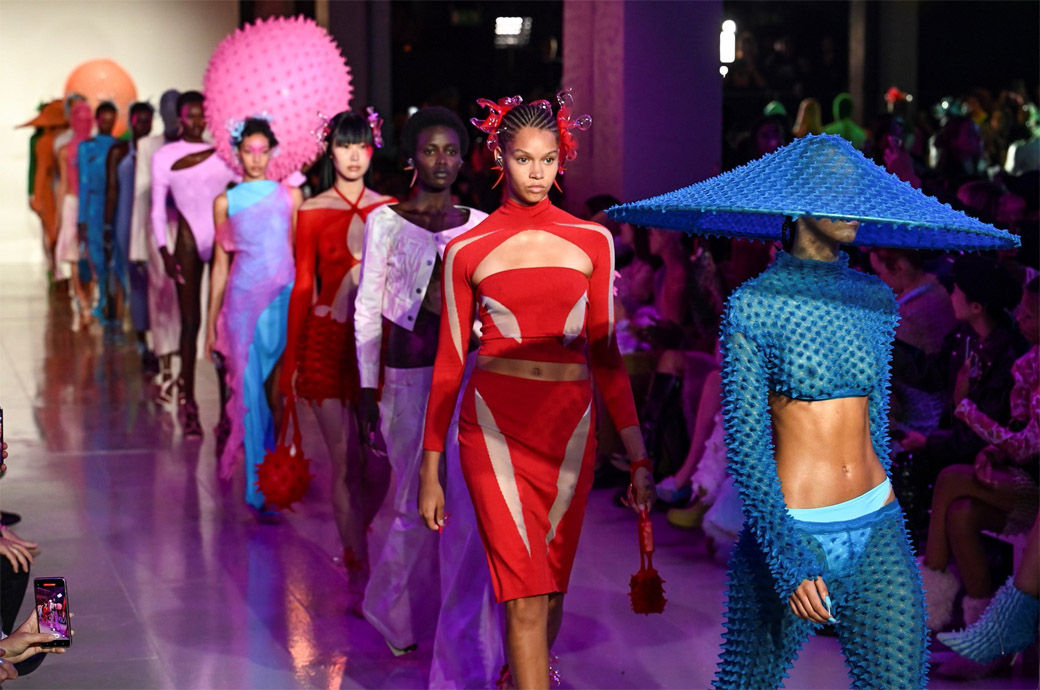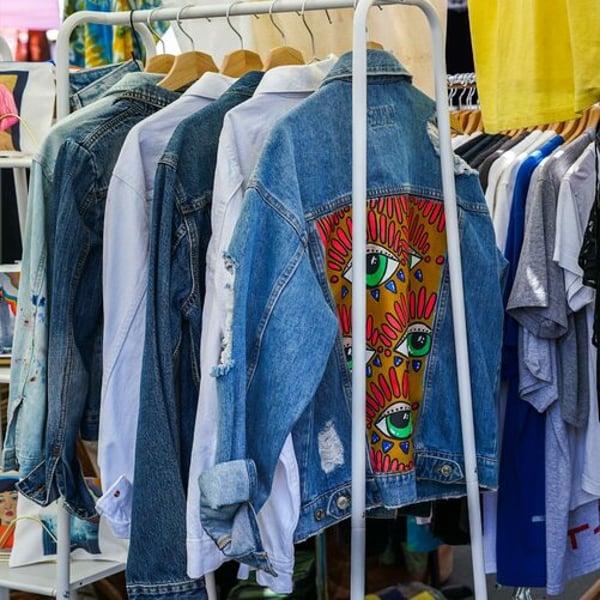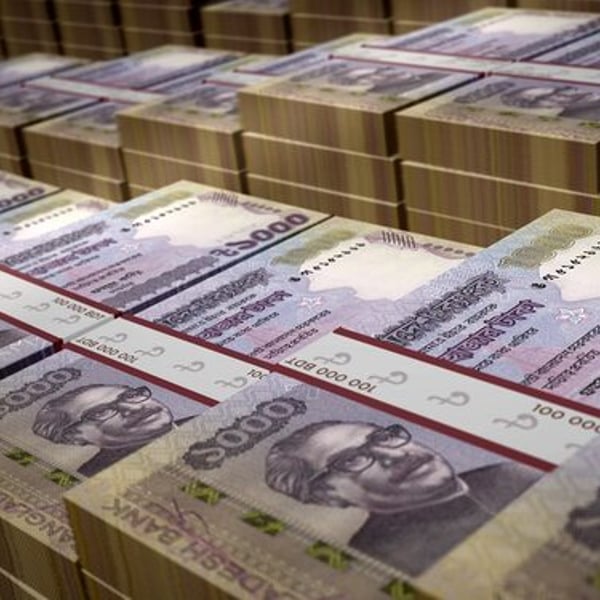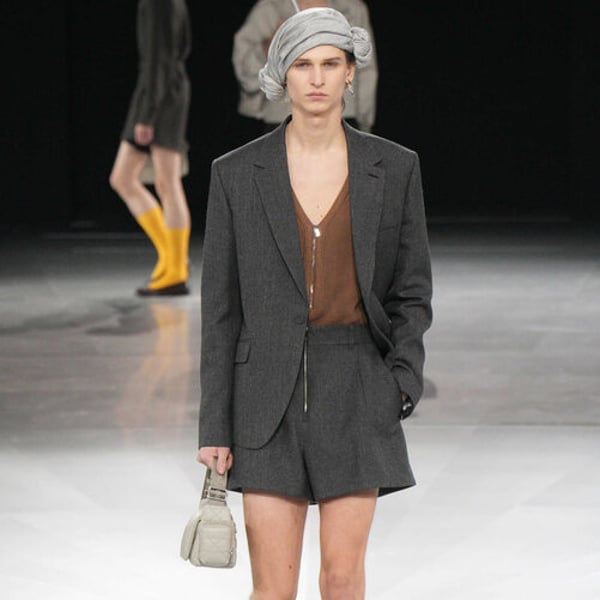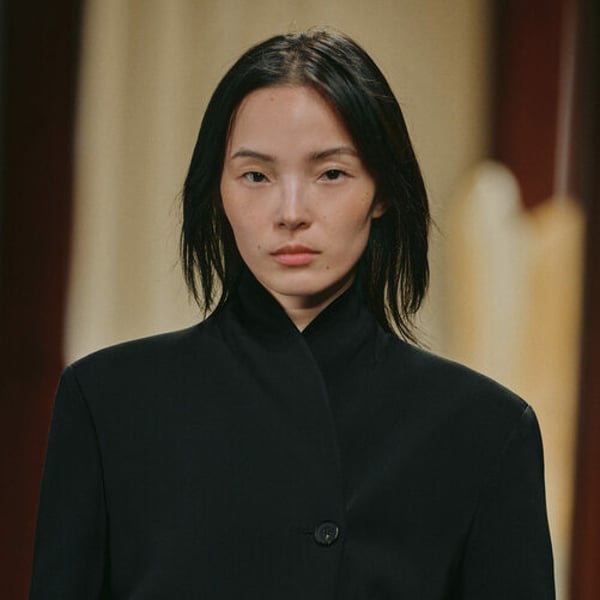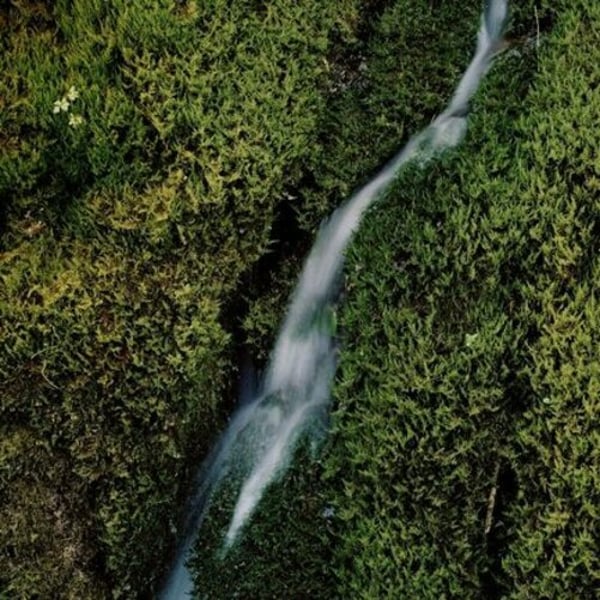Published
September 16, 2024
Sunday of London Fashion Week is always the busiest day, featuring shows from the four most critically acclaimed independent fashion houses in the UK today: JW Anderson, Simone Rocha, Erdem and Roksanda.
JW Anderson: Trompe l'oeil and trance
Talk about a very precise approach from JW Anderson. Just four fabrics, repetitive shapes and trance music throughout, but a lot of ideas in a very powerful show.
A packed One Billingsgate Market on a sunny morning, with the public seated in white cubic boxes and an upper gallery packed with standing room.
Composed of leather, cashmere, silk and sequins, in a show lit up by first looks featuring very tight, very mini cocktail dresses, made up of trompe l'oeil sequins, one featuring a mock sweatshirt with laces, another in fake denim with a fake patch pocket.
“Using the same material in different looks to make it look like something completely different… Handwoven, denim or knit. Feminine, but with a toughness. An incomprehensible look, so it was a very fitted silhouette. Narrowing the mind down to just four materials was an interesting exercise,” Anderson explained after the show.
At a show right next to the Tower of London, Anderson also presented flared, puffy silk dresses, reminiscent of Beefeaters and Tudor courtiers. Before launching her big idea: the outlandish leather tutu. Tutus cut so high that you could see the crotch underneath. Made from the stiffest calfskin, sometimes in minidresses paired with a leather vest; sometimes with cashmere sweaters.
However, his most surprising idea was a series of cross-breeding Dresses and blouses, made from four-inch-wide strips of wool. Like most of the looks, the main focus was on chunky, worker-style boots, with the back zippers open. Followed by a series of sequinned cocktail dresses and scarves that were incredibly well styled, all of them fantastic magazine cover looks.
Asked by FashionNetwork.com about his obsession with trompe l'oeil, Anderson replied: “I've used it for a long time in my work. An obsession with painters who used it in Italian modernism. I've always liked a bit of a trick, that double look, in this case printed in 3D so that it has an even greater depth of field.”
Nude silk flight jackets, voluminously tailored as short cocktail dresses, also impressed at a fast-paced event backed by trance tracks such as Sophie Powers & Grimes' 'Obsessed' or Fred again's 'Valentina'.
Its latest appearance was another hard-shell calfskin cover on which were printed extracts from an essay by Clive Bell on Mesopotamian civilisation, although it was really about whether art and design should go hand in hand. This exhibition, in a way, answered that question. Of course they should, and they did so today at Billingsgate.
Simone Rocha: Satirically sexy
Pearls, metres of satin, hectares of tulle, gauze, crystals, little ducks for bags, huge jeans and lots of carnations were the elements juxtaposed in Simone Rocha's latest great collection.

In the hands of a lesser talent, this could have been a disaster, but Rocha is such a subtle creator that the whole thing came together in great style.
Staged inside the Old Bailey, beneath frescoes by Solomon and scores of celebrity judges, including the Lord Chancellor Sir Heneage Finch, the show was loudly applauded by the erudite fashion judges: critics, editors, buyers and fellow designer Craig Green.
Above all, Simone's flair for draping made for a wonderful trilogy at the finale: puffy bows that morphed into surprisingly diaphanous dresses. Though Rocha always knows how to dilute grandeur with a touch of scruffy punk, seen in cardigans with slits that reveal flesh-coloured bras.
But the key to the collection was the carnation, in silk as an embellishment or in real flowers sewn into flesh-coloured mesh dresses. Very angelic and yet subversive. All of this leading up to a fantastic new range of footwear: a new collaboration with Crocs and a series of sure-fire bestsellers combining perforated Crocs and Simone's love of contrasting laces, the fantasy of Pearly Men and large crystals.
In a co-ed show, boys also sported carnations inside pink tulle safari jackets or transparent lab coats worn over panties.
“Screaming, crying, laughing, dying, flirting,” Rocha opined in his stream-of-consciousness show notes. The flirting was evident as models floated past in their long silk columns, slashed at the sides and done in a sinful boudoir red, or even the purple of Clongowes Wood College. Satirical, outrageous but always poetic, and as ever, one of the most important reasons one goes to London Fashion Week. Rocha reigns again.
Erdem: The Renaissance of Radclyffe Hall
Erdem Moralıoğlu completed a trilogy this season. He created a third collection inspired by a visionary woman, in this case Radclyffe Hall, and presented the results again at the British Museum.

Hall is most famous for two things: her semi-autobiographical novel The Well of Loneliness and her very public lesbian lifestyle in the 1920s.
Published in 1928, The Well of Loneliness (like Lady Chatterley's Lover) was banned until the 1950s. But today, Hall's unique style, her obsession with Savile Row tailoring and her collaboration with Una Troubridge have helped make this a great collection.
A year ago, Erdem was inspired by Deborah Mitford, and last season by Maria Callas. “This is the third installment,” Erdem explained, calling The Well of Loneliness “a queer lesbian bible… The Well of Loneliness is the first book to describe a trans relationship.”
Born Marguerite, Radclyffe went by John and this collection focuses on the push and pull between masculine and feminine.
Thus, Erdem recovered dresses from the 1920s, opened them up and then converted the result into silkscreens which she later used as embroidery on flat pieces of linen.
The creation of low-waisted Entre Deux Guerres silhouettes, to achieve a straight and relaxed silhouette, was a reference to Hall's partner, Una, dressed in a very feminine way, through semi-transparent silk negligee dresses, embroidered with chains and crystals, through which black bras could be seen.
Erdem even used denim in garments that were folded, dyed, bleached and dyed again to achieve almost glowing dresses. And he wrapped many of his actors in silk coats, some topped with the gay symbol of the green carnation.
While Radclyffe's love of suits was recalled in the chalk-striped double-breasted banker's suit on whose left forearm was a cotton patch printed on the original cover of the banned book.
All in all, an elegant and artistic way to remember a great writer and an innovative individual like Erdem in this collection.
Roksanda: The search for balance
No designer is as refined in London today as Roksanda Ilinčić, who invited his guests to Space House, a new circular office building offering a fabulous view of London.

Like the skyscraper, Roksanda concentrated on spherical shapes, gigantic ruffles and vast, billowing yards of silk faille. Although she was known for being a great colourist, her early looks were grandly cut monochromatic suits and coats with slits and slits at the sides.
Few people can pull off a handkerchief skirt as well as Roksanda, who produced beautifully proportioned versions topped with batwing tops.
Before suddenly going all-out with abstract expressionist-print cocktails or some totally daring patent leather streetwear coats, often anchored by absurdly fluffy feather shoes.
From the view of the skyscrapers – The Shard, Razor or Cheese Grater – it almost seemed like a New York show, except for the soundtrack, a string ensemble.
Since first appearing on the fashion radar at Fashion East nearly two decades ago, Roksanda has carved out a unique place for herself in fashion. This collection kept the momentum going.
Copyright © 2024 FashionNetwork.com All rights reserved.

